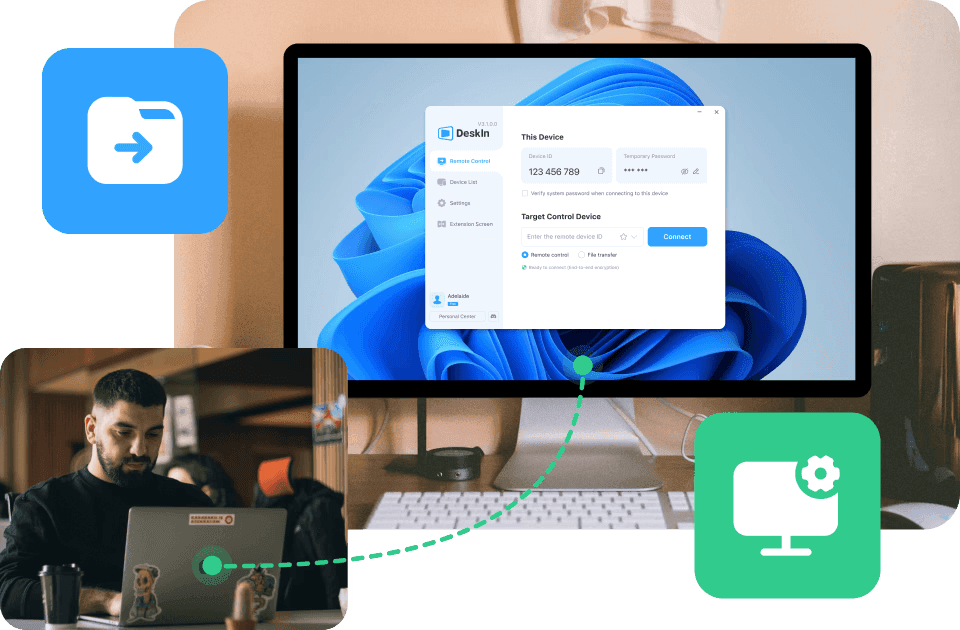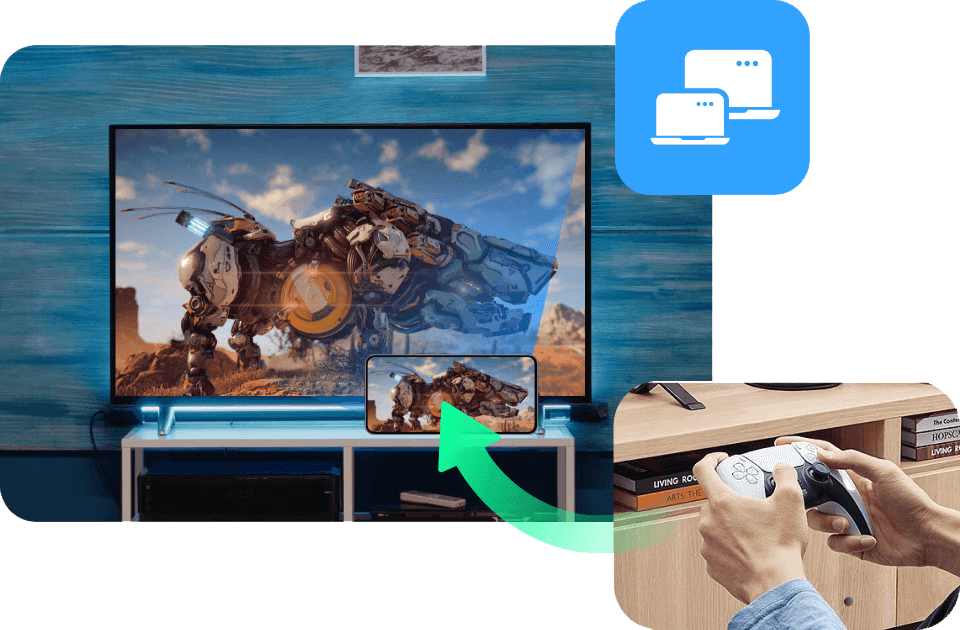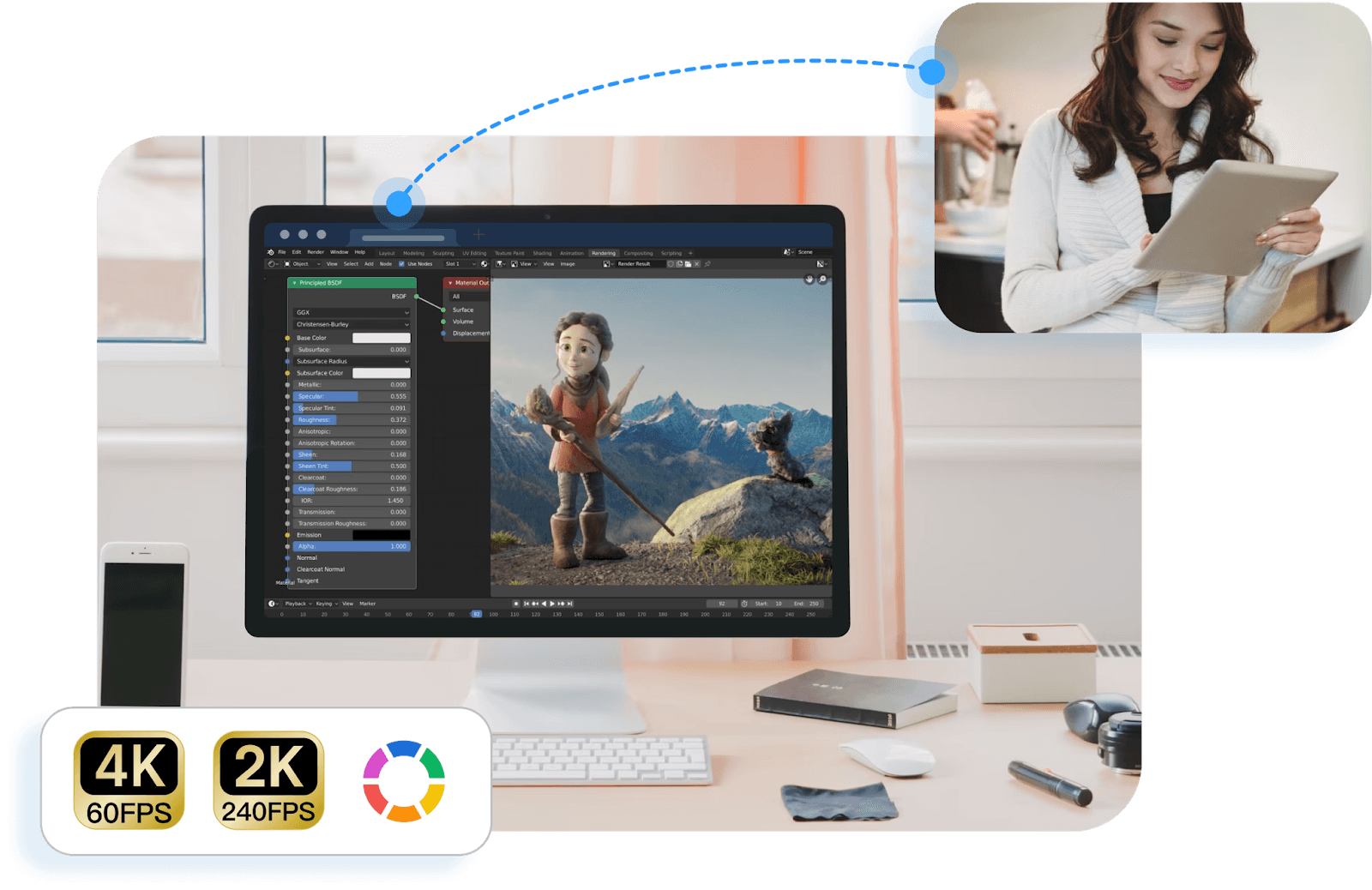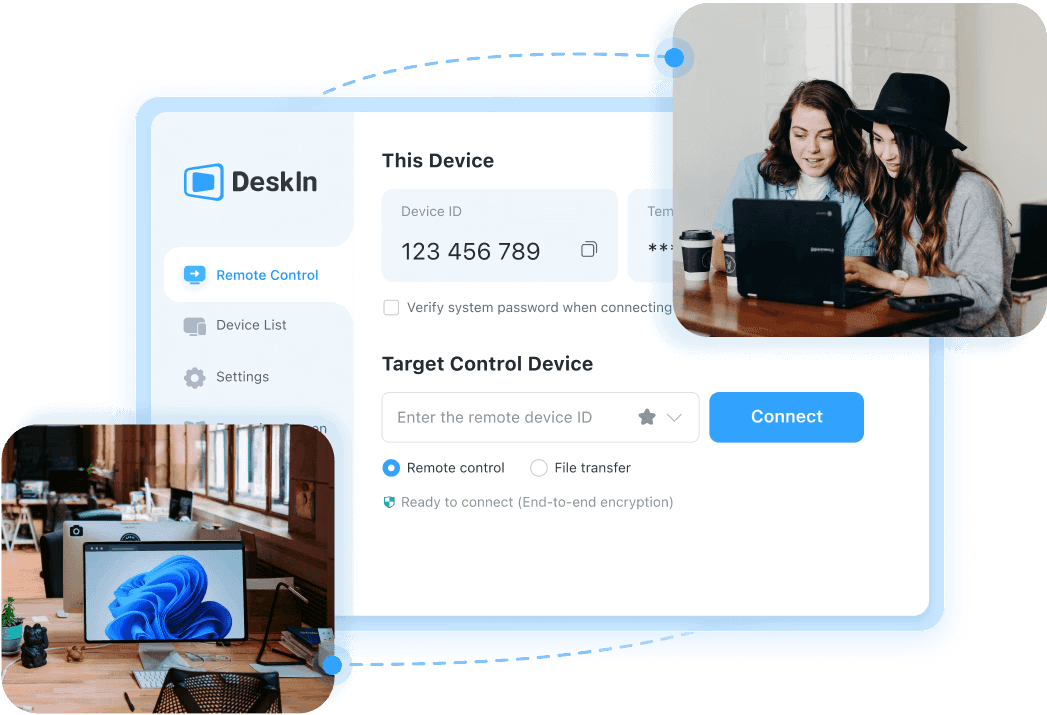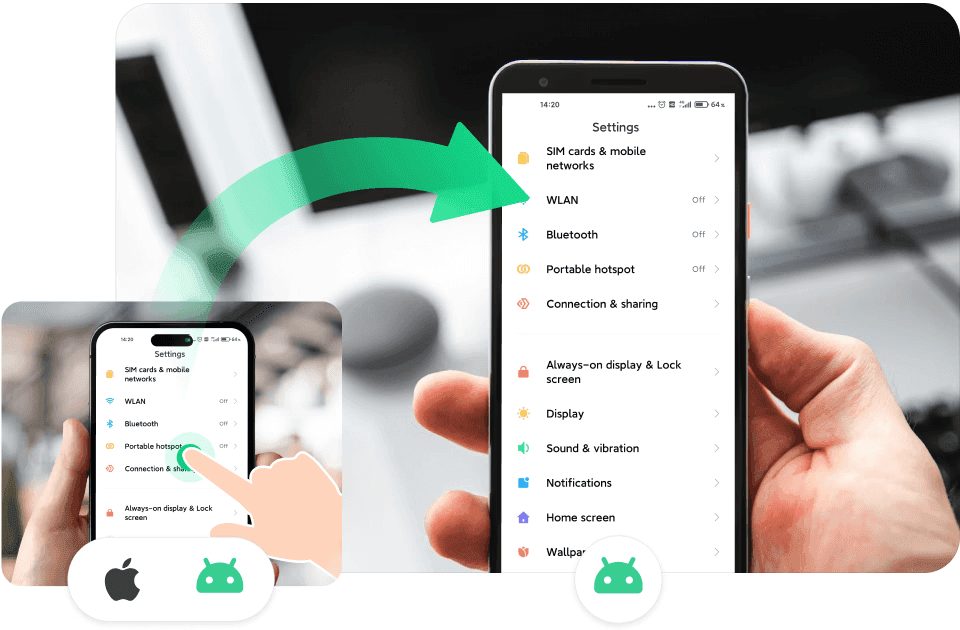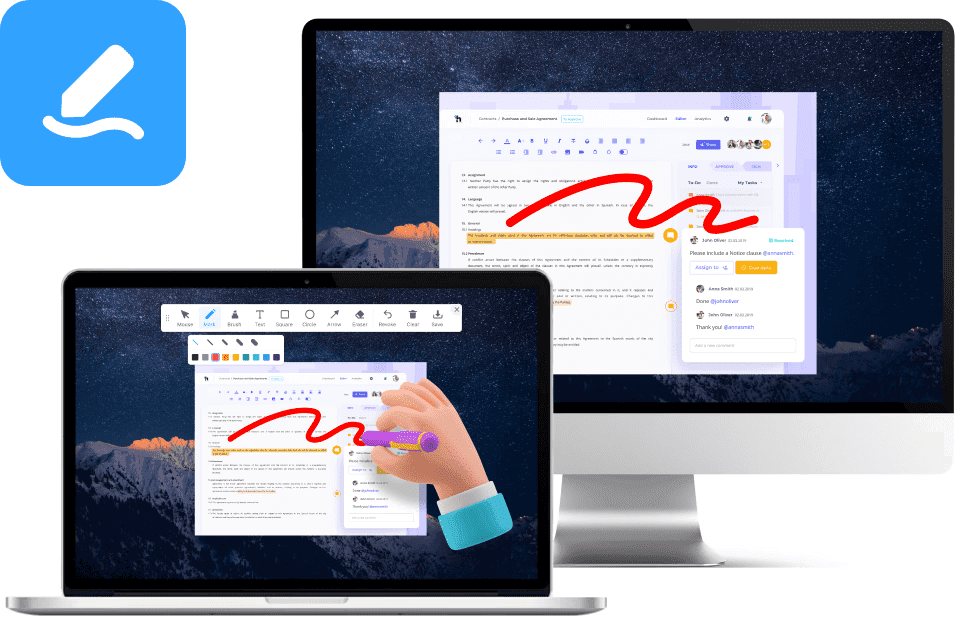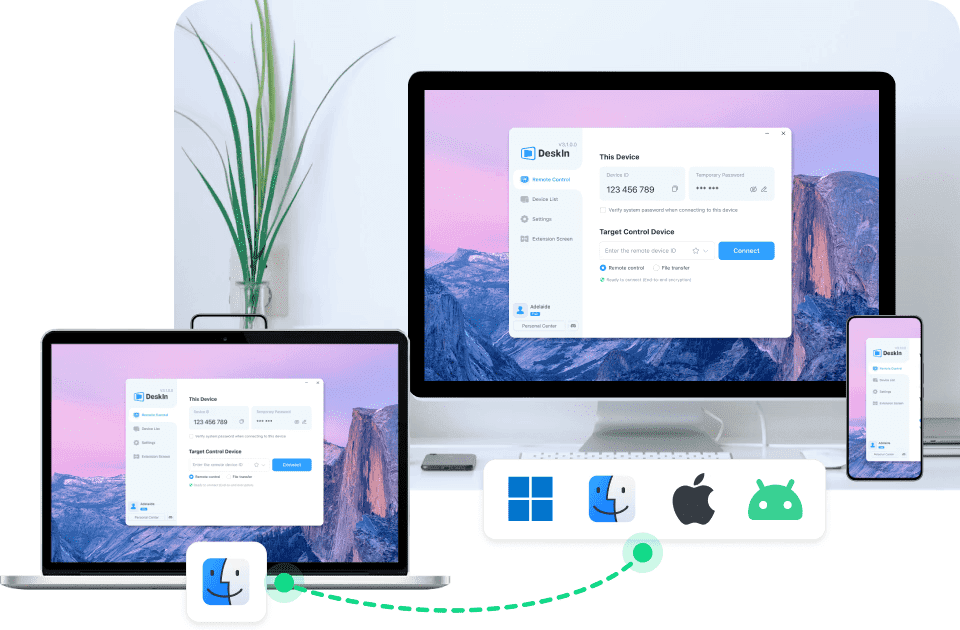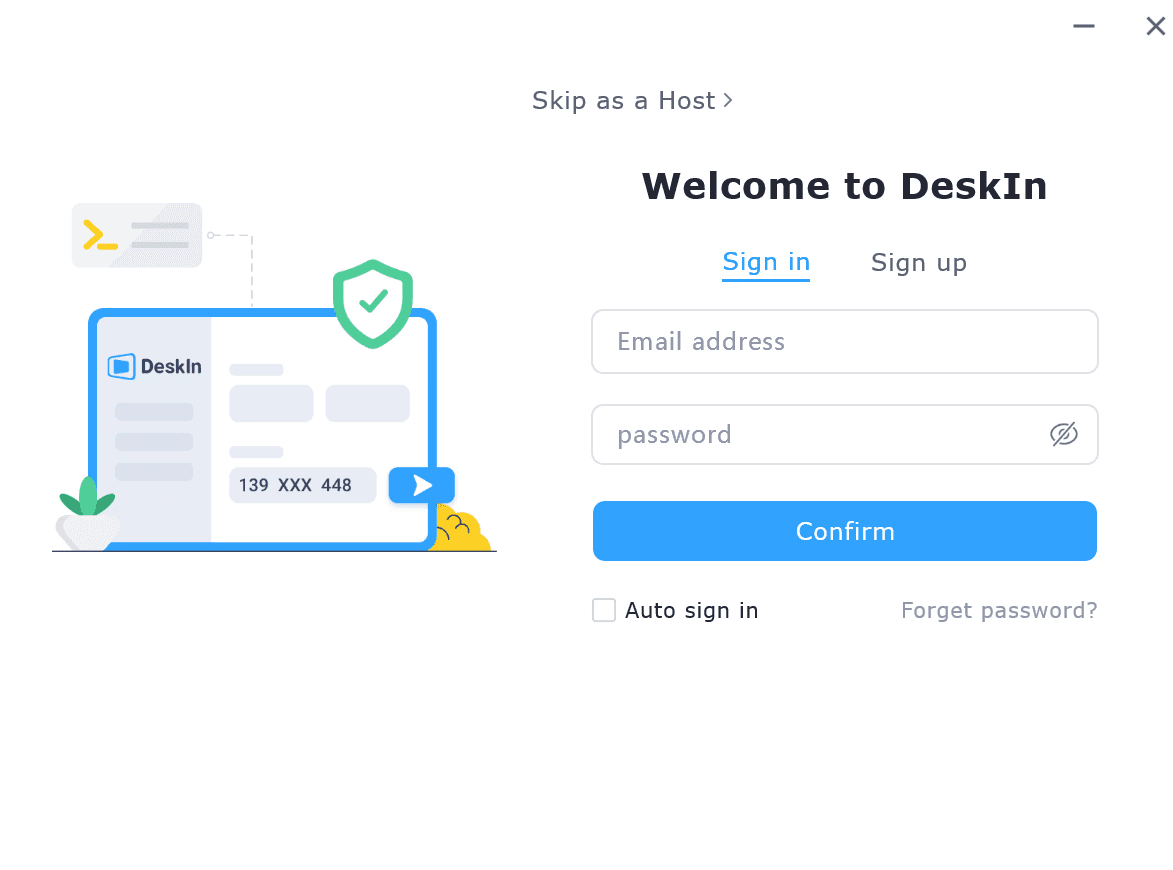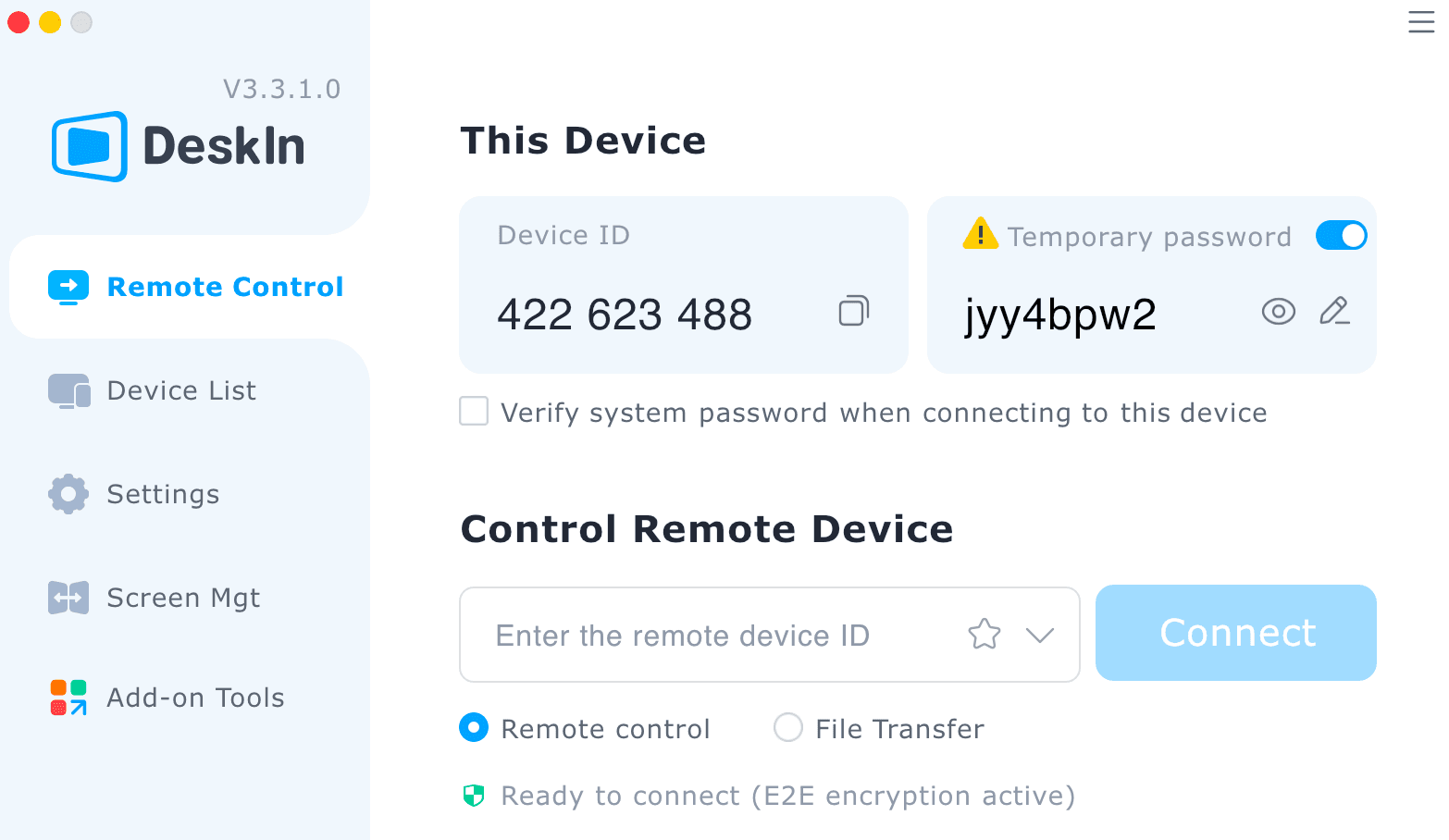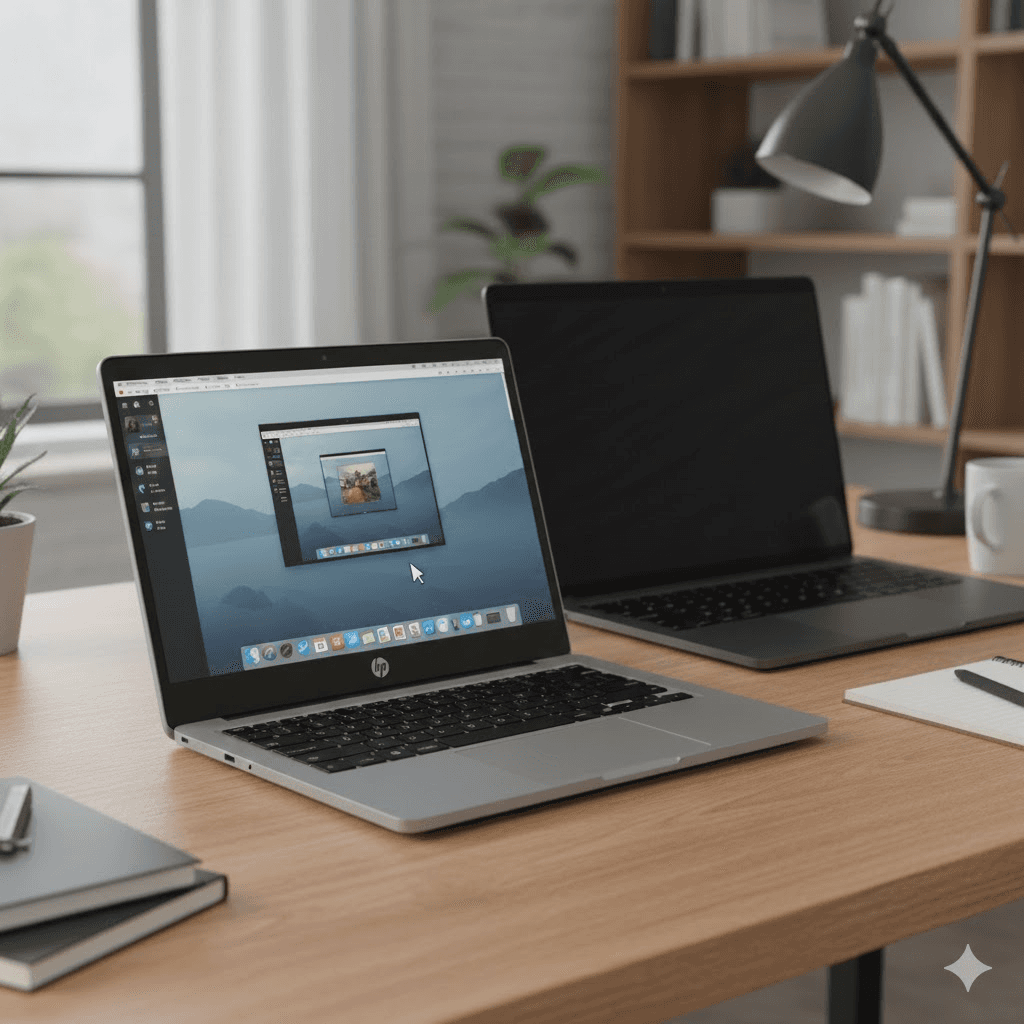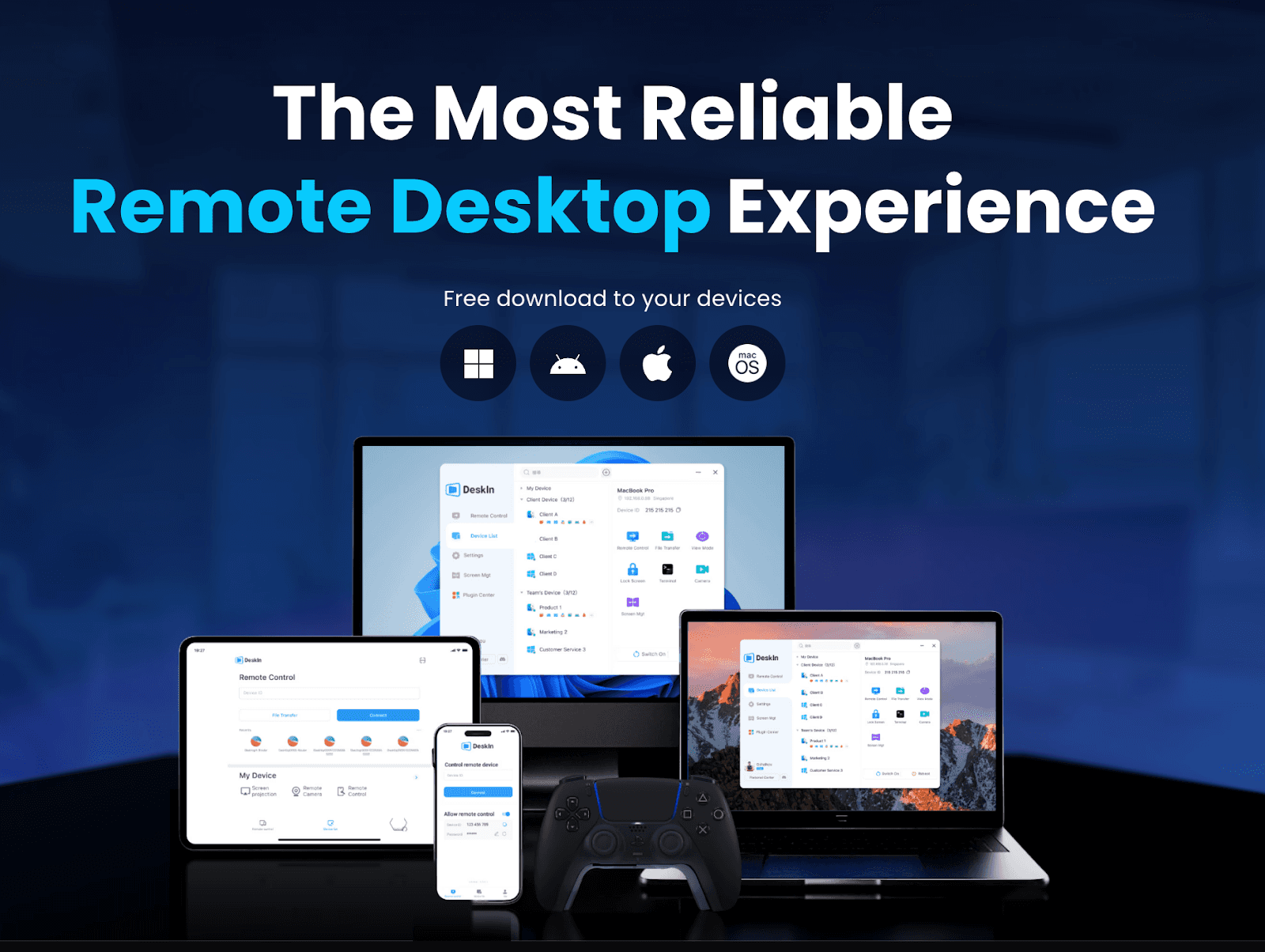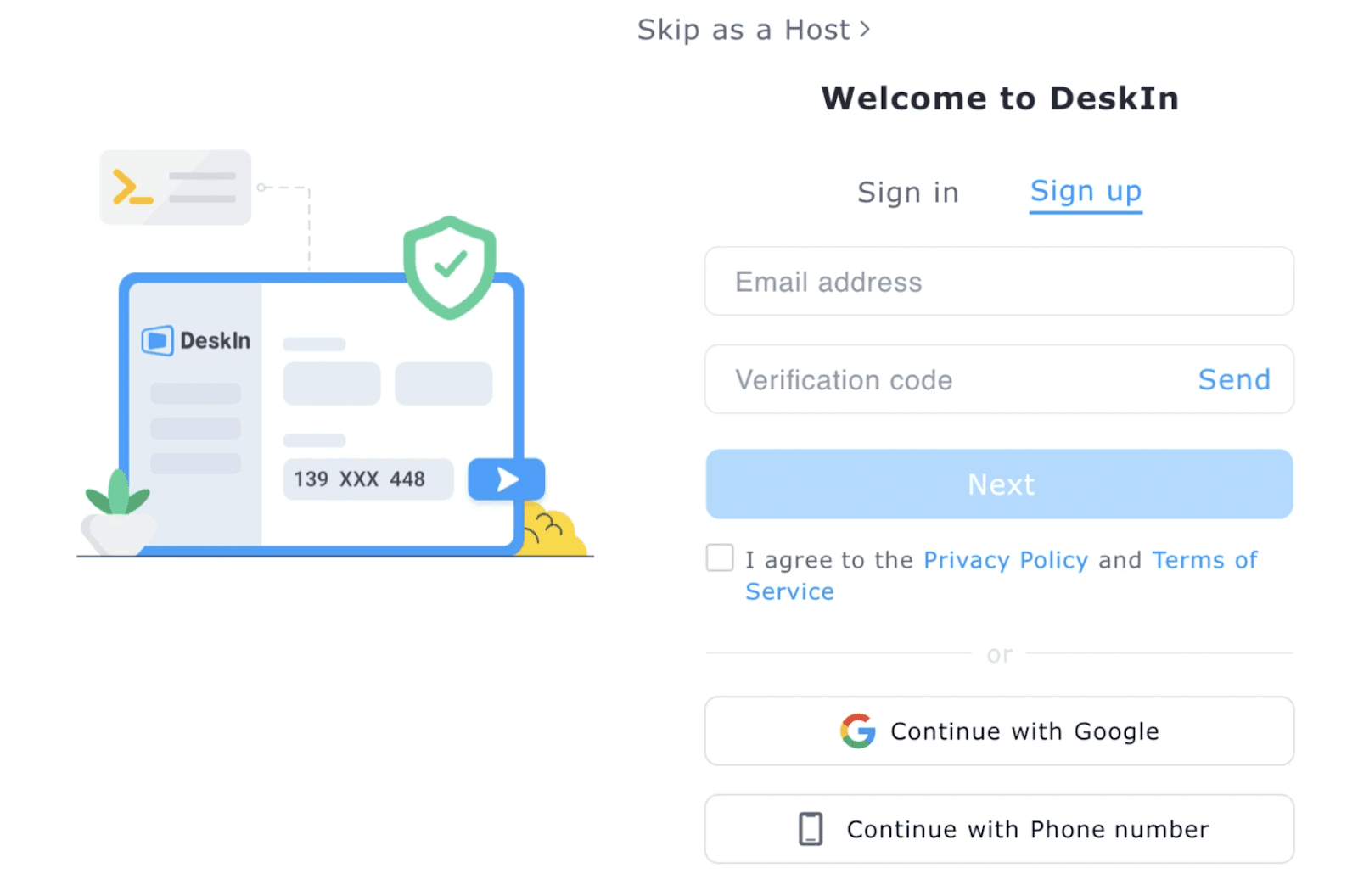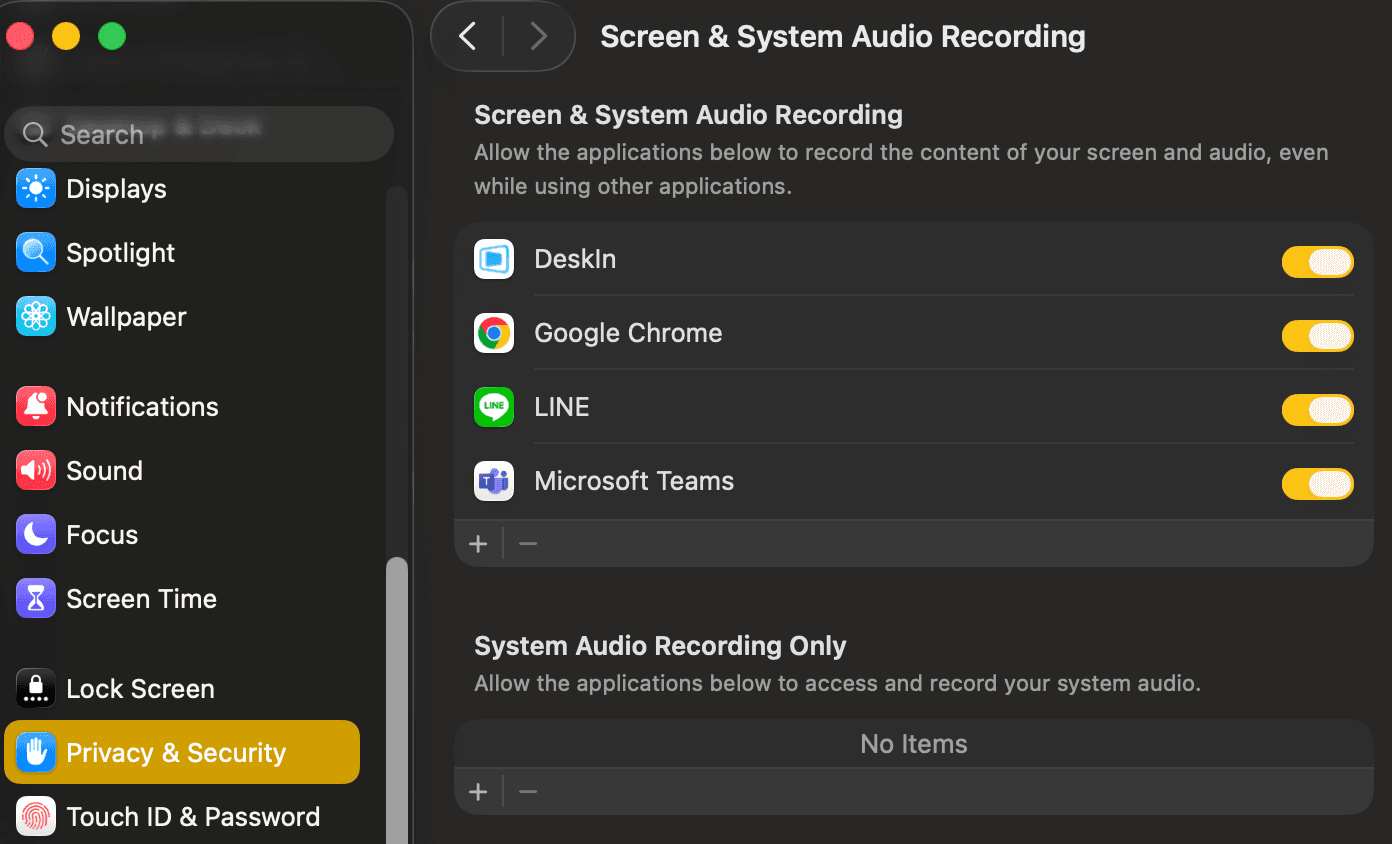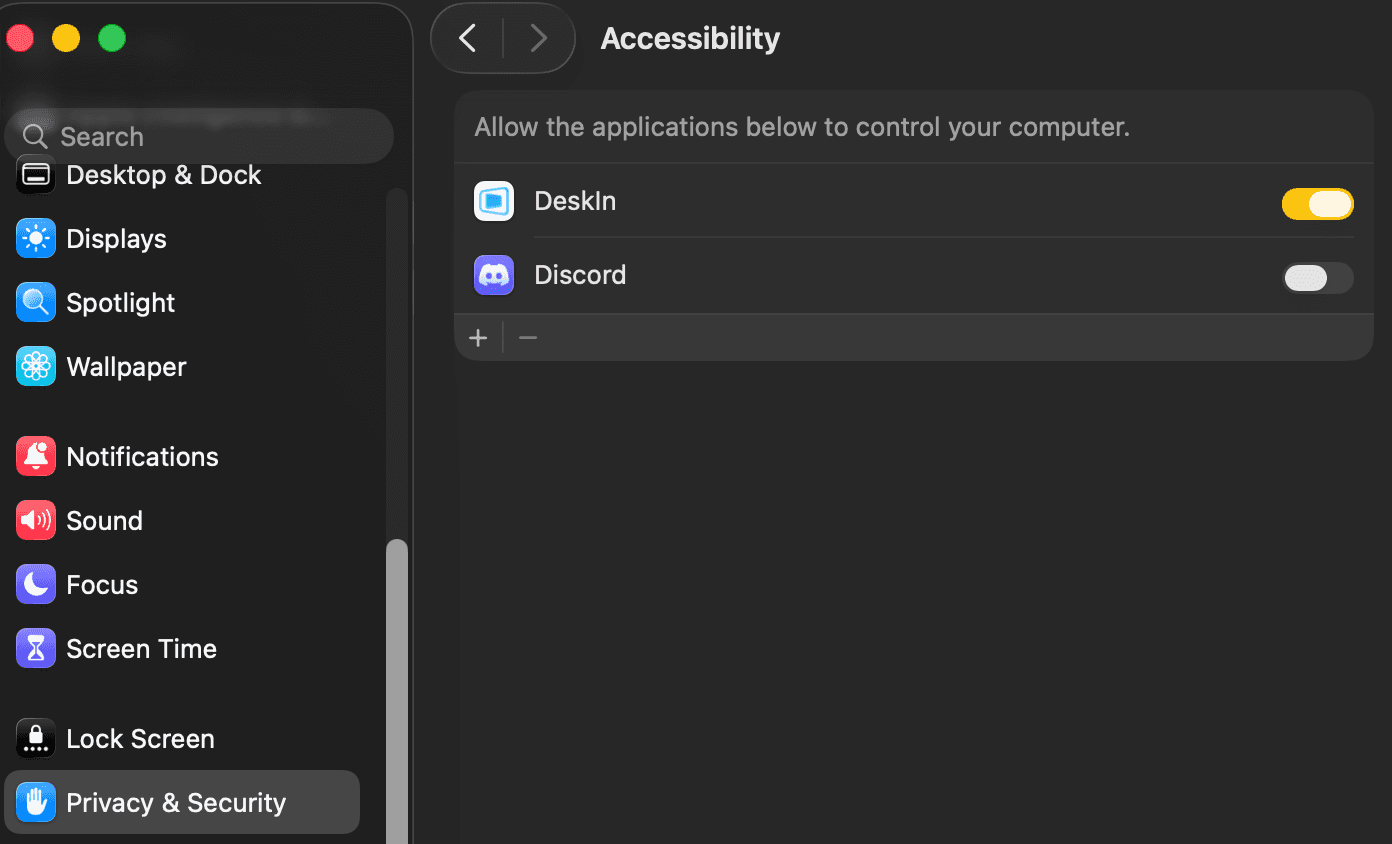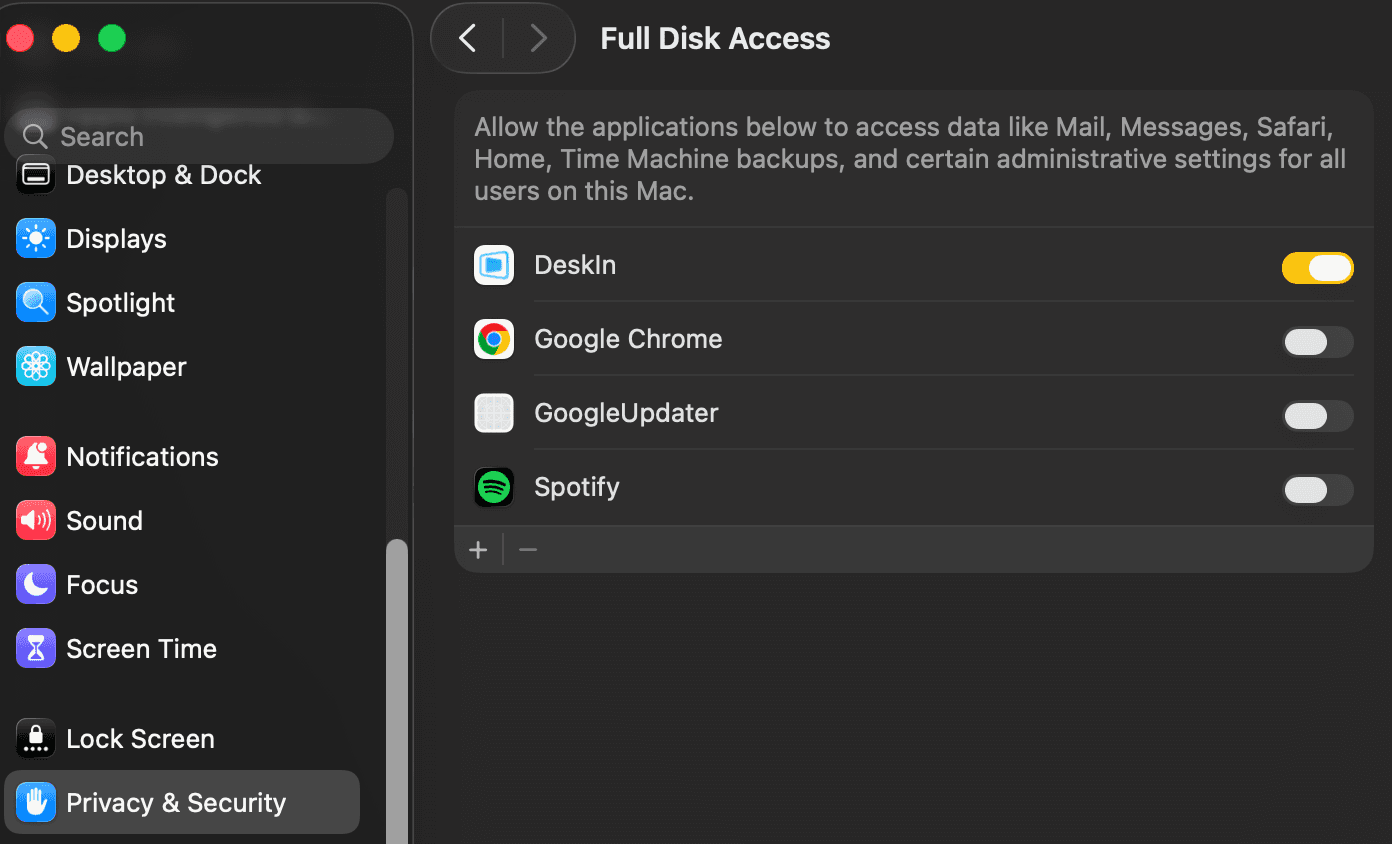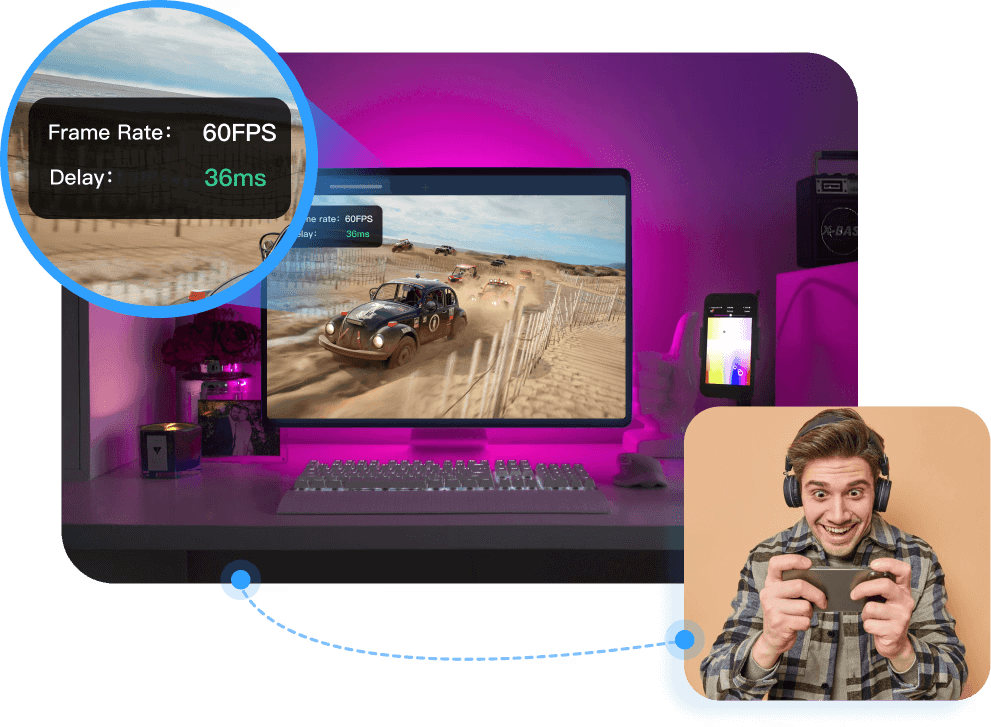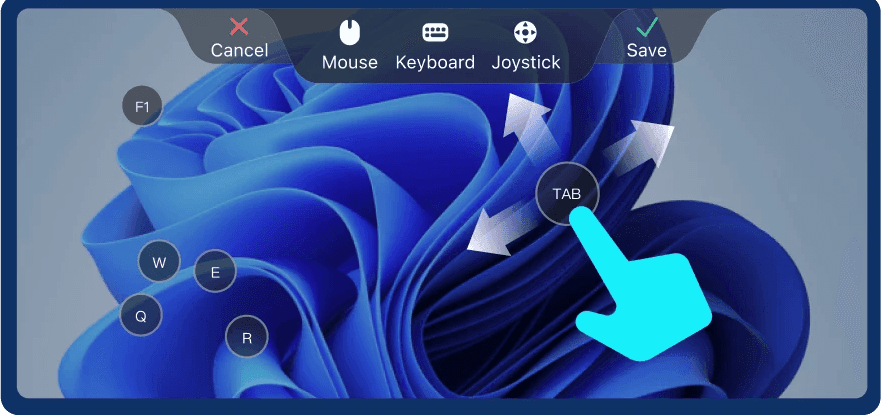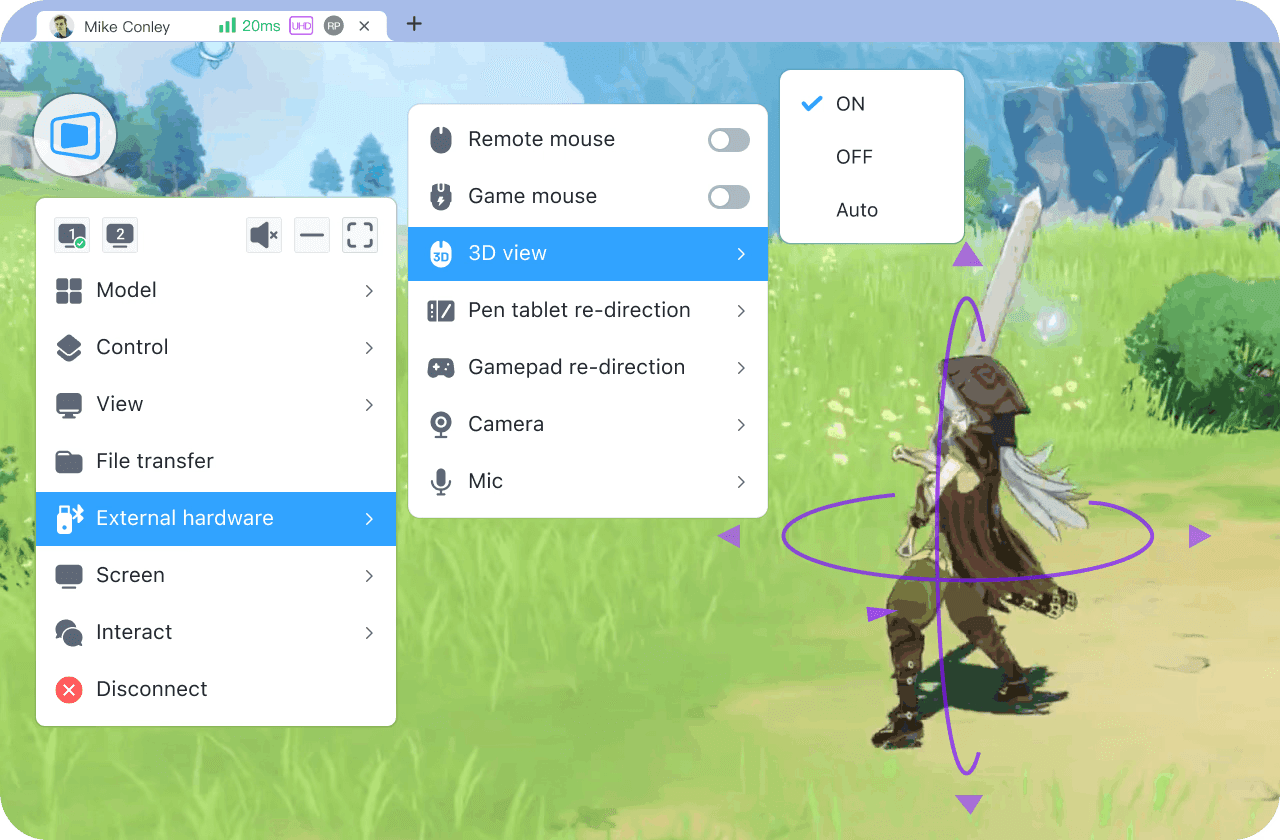働き方は根本的に変化しました。リモートプロジェクト管理は、マーケティング、製品開発、デザイン、その他すべての部門において欠かせない存在となっています。自由度が高いこの変化には、重要な問題が伴います。生産性、協力、そしてセキュリティを維持しつつ、どうやって効果的なリモートプロジェクト管理を実現するのかということです。
答えは、リモートプロジェクト管理戦略を熟達し、特にリモートデスクトップ技術を駆使することにあります。
リモートプロジェクト管理の革命
従来のオフィスベースのプロジェクト管理は急速に時代遅れになりつつあります。リモートプロジェクト管理により、すべての部門のチームが場所を問わず接続、専門ツールへのアクセス、効果的な協力が可能になりました。これは単なる利便性の問題ではなく、競争優位性とビジネス継続性を維持するためには必要不可欠なものです。
技術に依存するにあたり、強力なリモートプロジェクト管理ソリューションの需要が急増しています。リモートプロジェクト管理の成功は、全ての部門での収益性と運用効率に直接影響を与えるのです。
リモートプロジェクト管理の主要な課題

1. リモートプロジェクト管理におけるコミュニケーションとコラボレーション
リモートプロジェクト管理で最大の障害は、シームレスなコミュニケーションを維持することです。対面での即時のやり取りがないため、誤解や反応の遅れのリスクが高まります。チームは、クイックな質問から複雑なブレインストーミングセッションまで、信頼できるチャンネルを必要とします。
2. リモートプロジェクト管理での専門リソースへのアクセス
リモートプロジェクト管理の多くのシナリオでは、パーソナルデバイスでは不可能な強力なアプリケーション、大規模なファイル、または特定のハードウェアが必要です。ビデオ編集者には高性能のワークステーションが必要で、開発者にはサーバーアクセスが、デザイナーには専門ソフトウェアが必要です。これらはすべて、リモートプロジェクト管理の成功に不可欠です。
3. リモートプロジェクト管理で一貫した環境を維持する
異なるオペレーティングシステム、ソフトウェアバージョン、ハードウェア仕様が、リモートプロジェクト管理の効果を損ないます。特に技術者やクリエイティブチームにおいて、一貫性がリモートプロジェクト管理の成功には重要です。
4. リモートプロジェクト管理でのリモートオンボーディング
対面での交流なしに新しいチームメンバーをリモートプロジェクト管理のワークフローに組み込むには、リモートプロジェクト管理のベストプラクティスに合った体系的な仮想トレーニングプロセスが必要です。
リモートプロジェクト管理のための必須戦略

1. 明確なリモートプロジェクト管理のコミュニケーションを確立する
リモートプロジェクト管理のための適切なチャンネルを選択:
迅速なリモートプロジェクト管理の質問用のインスタントメッセージ
正式なリモートプロジェクト管理のお知らせ用のメール
複雑なリモートプロジェクト管理の議論用のビデオ通話
定期的なリモートプロジェクト管理の接続を維持する:
リモートプロジェクト管理の進捗に焦点を当てた毎日のスタンドアップ
リモートプロジェクト管理の目標をレビューするための週次同期
すべての重要なリモートプロジェクト管理の決定を文書化する
リモートプロジェクト管理のブレインストーミングにはビデオを優先する
2. 強力なリモートプロジェクト管理ツールを導入する
以下を可能にするリモートプロジェクト管理プラットフォームを選択:
リアルタイムの共同作業とタスク追跡
デバイスや場所を超えたユニバーサルアクセス
リモートプロジェクト管理ツール間のシームレスな統合
リモートプロジェクト管理ユーザーへの包括的なトレーニング
トップリモートプロジェクト管理プラットフォーム:
Asana: マーケティングキャンペーンのリモートプロジェクト管理に優れる
Monday.com: カスタマイズ可能なワークフローによるビジュアルリモートプロジェクト管理
Jira: 技術的なリモートプロジェクト管理や開発に最適
Trello: シンプルなカンバンベースのリモートプロジェクト管理アプローチ
3. 強力なリモートプロジェクト管理カルチャーを構築する
成功するリモートプロジェクト管理には以下が必要:
リモートプロジェクト管理協力を中心としたバーチャルチームビルディング活動
非公式なリモートプロジェクト管理コミュニケーション専用のチャンネル
リモートプロジェクト管理の成果の公開認識
定期的な1対1のリモートプロジェクト管理チェックイン
リモートデスクトップ: リモートプロジェクト管理のゲームチェンジャー

リモートプロジェクト管理ツールの中で、リモートデスクトップ技術は際立った存在で、各部門におけるリモートプロジェクト管理の効果を飛躍的に向上させます。
リモートプロジェクト管理におけるリモートデスクトップとは?
リモートデスクトップは、どこからでもオフィスのコンピュータにアクセスして制御でき、リモートプロジェクト管理を円滑にします。マーケティング専門家はCRMソフトにアクセスし、ビデオ編集者は強力なスタジオワークステーションを使用し、開発者はサーバーに接続できます。これらはすべて、効果的なリモートプロジェクト管理に不可欠です。
リモートプロジェクト管理においてリモートデスクトップが必要な理由
リモートプロジェクト管理のための集中管理アクセス:
リモートプロジェクト管理に不可欠な専門ソフトウェアにアクセス
大規模なファイルを安全に扱い、リモートプロジェクト管理のセキュリティを損なわない
リモートプロジェクト管理ワークフローにおいて最新バージョンをすべての人が利用できるようにする
リモートプロジェクト管理でのセキュリティ強化:
リモートプロジェクト管理中のデータは安全な企業サーバーに保持
リモートプロジェクト管理セッションの詳細なアクセスコントロール
デバイスの盗難リスクをリモートプロジェクト管理状況で軽減
リモートプロジェクト管理に必要なコンプライアンス要件を満たす
一貫したリモートプロジェクト管理環境:
すべてのリモートプロジェクト管理ユーザーのソフトウェアバージョンが同じ
標準化されたリモートプロジェクト管理のワークフローとプロセス
要求の高いリモートプロジェクト管理タスクのための高性能コンピューティング
リモートプロジェクト管理運用のための簡素化されたITサポート
リモートデスクトップソリューションを選ぶためのリモートプロジェクト管理
リモートプロジェクト管理に焦点を当てた選択肢を検討:
Microsoft Remote Desktop: シンプルなWindowsベースのリモートプロジェクト管理アクセス
TeamViewer: コラボレーション機能を備えたクロスプラットフォームリモートプロジェクト管理
Citrix Virtual Apps: 複雑な環境のための企業グレードのリモートプロジェクト管理
DeskIn: 超低遅延、4K対応、包括的な管理ツールを備えた現代のリモートプロジェクト管理ソリューションで、リモートプロジェクト管理ワークフローに最適
リモートプロジェクト管理の実装ベストプラクティス
リモートプロジェクト管理の全てのチームメンバーに安定したインターネットを確保する
リモートプロジェクト管理セッションの強力なセキュリティを確保する
リモートプロジェクト管理アクセスのための詳細なユーザー権限を設定する
リモートプロジェクト管理の異なる場所間でパフォーマンスをテストする
役割ごとの具体的なリモートプロジェクト管理トレーニングを提供する
明確なリモートプロジェクト管理文書を作成する
リモートプロジェクト管理のサポート手順を確立する
定期的なリモートプロジェクト管理のチェックインを実施する
リモートプロジェクト管理を支えるツール
リモートプロジェクト管理プラットフォーム: Asana、Monday.com、Trello、Jira
リモートプロジェクト管理のためのコミュニケーション: Slack、Microsoft Teams、Zoom、Discord
リモートプロジェクト管理のファイル共有: Google Workspace、Dropbox Business、SharePoint、DeskIn
リモートプロジェクト管理の成功を測る
これらのリモートプロジェクト管理指標を追跡しましょう:
リモートプロジェクト管理のタイムライン遵守
リモートプロジェクト管理イニシアチブの予算偏差
リモートプロジェクト管理の成果物における品質指標
リモートプロジェクト管理活動でのチームのエンゲージメント
リモートプロジェクト管理のワークフローでのコミュニケーション
リモートプロジェクト管理の成功を測る
リモートプロジェクト管理の成功指標を追跡しましょう:
リモートプロジェクト管理のタイムラインの順守
リモートプロジェクト管理プロジェクトの予算変動
リモートプロジェクト管理の成果物の品質指標
リモートプロジェクト管理の活動におけるチームのエンゲージメント
リモートプロジェクト管理の活動におけるコミュニケーション
リモートプロジェクト管理の成功に向けての最善策
定期的なリモートプロジェクト管理の更新: 毎日のスタンドアップとプロジェクトダッシュボード
柔軟なリモートプロジェクト管理: ピアレビューと共同編集
リモートプロジェクト管理のリスク管理: 非常事態計画とチームの現状確認
リモートプロジェクト管理の成功をマスターするためには
成功するリモートプロジェクト管理には、戦略的な計画、適切なツール、継続的な改善が必要です。リモートデスクトップ技術はリモートプロジェクト管理において特に価値があり、重要なリソースへの安全で集中的なアクセスを提供します。
リモートプロジェクト管理に成功するためには、戦略的な計画を立て、適切なツールを選び、常に改善を続けることが求められます。リモートデスクトップ技術は、特にリモートプロジェクト管理において貴重であり、重要なリソースへの安全で集中したアクセスを提供します。
全てのチームには独自のリモートプロジェクト管理のニーズがあるため、それぞれのアプローチに合わせて洗練された方法が必要です。忍耐力と継続的な改善を通じて、リモートプロジェクト管理は伝統的な対面でのプロジェクト管理と同等以上に効果的なものとなるでしょう。
リモートプロジェクト管理の能力を変革する準備はできましたか?リモートプロジェクト管理のワークフローを革命的に変え、チームの生産性を飛躍的に向上させる最先端のリモートデスクトップソリューションを探求してください。
リモートプロジェクト管理のベストプラクティス
定期的なリモートプロジェクト管理の更新:デイリースタンドアップやプロジェクトダッシュボードの活用
柔軟なリモートプロジェクト管理体制:一貫したスケジュールと柔軟な勤務時間の両立
リモートプロジェクト管理における品質保証:ピアレビューや共同編集の実施
リモートプロジェクト管理のリスク管理:コンティンジェンシープラン(代替計画)とチームの健康状態のモニタリング
まとめ:リモートプロジェクト管理を極める
リモートプロジェクト管理を成功させるには、戦略的な計画、適切なツール、そして継続的な改善が不可欠です。特にリモートデスクトップ技術は、セキュアで集中管理された重要リソースへのアクセスを可能にし、一貫した作業環境を維持できるため、リモートプロジェクト管理において非常に有用です。
リモートプロジェクト管理の成功の鍵は、十分な準備、明確なコミュニケーション、そして柔軟性 にあります。これらを備えることで、リモートプロジェクト管理は従来の対面式プロジェクト管理と同等、あるいはそれ以上の効果を発揮できます。
また、チームごとに必要とされるリモートプロジェクト管理の形は異なるため、自分たちのニーズに合わせたアプローチをカスタマイズすることが重要です。忍耐と継続的改善へのコミットメントがあれば、リモートプロジェクト管理は今日のデジタル環境における大きな競争優位性となります。
リモートプロジェクト管理の能力を次のレベルへ変革しませんか?
先進的なリモートデスクトップソリューションを導入し、ワークフローを刷新することで、かつてないチーム生産性を実現できます。
👉 こちらからDeskInをお試しください

働き方は根本的に変化しました。リモートプロジェクト管理は、マーケティング、製品開発、デザイン、その他すべての部門において欠かせない存在となっています。自由度が高いこの変化には、重要な問題が伴います。生産性、協力、そしてセキュリティを維持しつつ、どうやって効果的なリモートプロジェクト管理を実現するのかということです。
答えは、リモートプロジェクト管理戦略を熟達し、特にリモートデスクトップ技術を駆使することにあります。
リモートプロジェクト管理の革命
従来のオフィスベースのプロジェクト管理は急速に時代遅れになりつつあります。リモートプロジェクト管理により、すべての部門のチームが場所を問わず接続、専門ツールへのアクセス、効果的な協力が可能になりました。これは単なる利便性の問題ではなく、競争優位性とビジネス継続性を維持するためには必要不可欠なものです。
技術に依存するにあたり、強力なリモートプロジェクト管理ソリューションの需要が急増しています。リモートプロジェクト管理の成功は、全ての部門での収益性と運用効率に直接影響を与えるのです。
リモートプロジェクト管理の主要な課題

1. リモートプロジェクト管理におけるコミュニケーションとコラボレーション
リモートプロジェクト管理で最大の障害は、シームレスなコミュニケーションを維持することです。対面での即時のやり取りがないため、誤解や反応の遅れのリスクが高まります。チームは、クイックな質問から複雑なブレインストーミングセッションまで、信頼できるチャンネルを必要とします。
2. リモートプロジェクト管理での専門リソースへのアクセス
リモートプロジェクト管理の多くのシナリオでは、パーソナルデバイスでは不可能な強力なアプリケーション、大規模なファイル、または特定のハードウェアが必要です。ビデオ編集者には高性能のワークステーションが必要で、開発者にはサーバーアクセスが、デザイナーには専門ソフトウェアが必要です。これらはすべて、リモートプロジェクト管理の成功に不可欠です。
3. リモートプロジェクト管理で一貫した環境を維持する
異なるオペレーティングシステム、ソフトウェアバージョン、ハードウェア仕様が、リモートプロジェクト管理の効果を損ないます。特に技術者やクリエイティブチームにおいて、一貫性がリモートプロジェクト管理の成功には重要です。
4. リモートプロジェクト管理でのリモートオンボーディング
対面での交流なしに新しいチームメンバーをリモートプロジェクト管理のワークフローに組み込むには、リモートプロジェクト管理のベストプラクティスに合った体系的な仮想トレーニングプロセスが必要です。
リモートプロジェクト管理のための必須戦略

1. 明確なリモートプロジェクト管理のコミュニケーションを確立する
リモートプロジェクト管理のための適切なチャンネルを選択:
迅速なリモートプロジェクト管理の質問用のインスタントメッセージ
正式なリモートプロジェクト管理のお知らせ用のメール
複雑なリモートプロジェクト管理の議論用のビデオ通話
定期的なリモートプロジェクト管理の接続を維持する:
リモートプロジェクト管理の進捗に焦点を当てた毎日のスタンドアップ
リモートプロジェクト管理の目標をレビューするための週次同期
すべての重要なリモートプロジェクト管理の決定を文書化する
リモートプロジェクト管理のブレインストーミングにはビデオを優先する
2. 強力なリモートプロジェクト管理ツールを導入する
以下を可能にするリモートプロジェクト管理プラットフォームを選択:
リアルタイムの共同作業とタスク追跡
デバイスや場所を超えたユニバーサルアクセス
リモートプロジェクト管理ツール間のシームレスな統合
リモートプロジェクト管理ユーザーへの包括的なトレーニング
トップリモートプロジェクト管理プラットフォーム:
Asana: マーケティングキャンペーンのリモートプロジェクト管理に優れる
Monday.com: カスタマイズ可能なワークフローによるビジュアルリモートプロジェクト管理
Jira: 技術的なリモートプロジェクト管理や開発に最適
Trello: シンプルなカンバンベースのリモートプロジェクト管理アプローチ
3. 強力なリモートプロジェクト管理カルチャーを構築する
成功するリモートプロジェクト管理には以下が必要:
リモートプロジェクト管理協力を中心としたバーチャルチームビルディング活動
非公式なリモートプロジェクト管理コミュニケーション専用のチャンネル
リモートプロジェクト管理の成果の公開認識
定期的な1対1のリモートプロジェクト管理チェックイン
リモートデスクトップ: リモートプロジェクト管理のゲームチェンジャー

リモートプロジェクト管理ツールの中で、リモートデスクトップ技術は際立った存在で、各部門におけるリモートプロジェクト管理の効果を飛躍的に向上させます。
リモートプロジェクト管理におけるリモートデスクトップとは?
リモートデスクトップは、どこからでもオフィスのコンピュータにアクセスして制御でき、リモートプロジェクト管理を円滑にします。マーケティング専門家はCRMソフトにアクセスし、ビデオ編集者は強力なスタジオワークステーションを使用し、開発者はサーバーに接続できます。これらはすべて、効果的なリモートプロジェクト管理に不可欠です。
リモートプロジェクト管理においてリモートデスクトップが必要な理由
リモートプロジェクト管理のための集中管理アクセス:
リモートプロジェクト管理に不可欠な専門ソフトウェアにアクセス
大規模なファイルを安全に扱い、リモートプロジェクト管理のセキュリティを損なわない
リモートプロジェクト管理ワークフローにおいて最新バージョンをすべての人が利用できるようにする
リモートプロジェクト管理でのセキュリティ強化:
リモートプロジェクト管理中のデータは安全な企業サーバーに保持
リモートプロジェクト管理セッションの詳細なアクセスコントロール
デバイスの盗難リスクをリモートプロジェクト管理状況で軽減
リモートプロジェクト管理に必要なコンプライアンス要件を満たす
一貫したリモートプロジェクト管理環境:
すべてのリモートプロジェクト管理ユーザーのソフトウェアバージョンが同じ
標準化されたリモートプロジェクト管理のワークフローとプロセス
要求の高いリモートプロジェクト管理タスクのための高性能コンピューティング
リモートプロジェクト管理運用のための簡素化されたITサポート
リモートデスクトップソリューションを選ぶためのリモートプロジェクト管理
リモートプロジェクト管理に焦点を当てた選択肢を検討:
Microsoft Remote Desktop: シンプルなWindowsベースのリモートプロジェクト管理アクセス
TeamViewer: コラボレーション機能を備えたクロスプラットフォームリモートプロジェクト管理
Citrix Virtual Apps: 複雑な環境のための企業グレードのリモートプロジェクト管理
DeskIn: 超低遅延、4K対応、包括的な管理ツールを備えた現代のリモートプロジェクト管理ソリューションで、リモートプロジェクト管理ワークフローに最適
リモートプロジェクト管理の実装ベストプラクティス
リモートプロジェクト管理の全てのチームメンバーに安定したインターネットを確保する
リモートプロジェクト管理セッションの強力なセキュリティを確保する
リモートプロジェクト管理アクセスのための詳細なユーザー権限を設定する
リモートプロジェクト管理の異なる場所間でパフォーマンスをテストする
役割ごとの具体的なリモートプロジェクト管理トレーニングを提供する
明確なリモートプロジェクト管理文書を作成する
リモートプロジェクト管理のサポート手順を確立する
定期的なリモートプロジェクト管理のチェックインを実施する
リモートプロジェクト管理を支えるツール
リモートプロジェクト管理プラットフォーム: Asana、Monday.com、Trello、Jira
リモートプロジェクト管理のためのコミュニケーション: Slack、Microsoft Teams、Zoom、Discord
リモートプロジェクト管理のファイル共有: Google Workspace、Dropbox Business、SharePoint、DeskIn
リモートプロジェクト管理の成功を測る
これらのリモートプロジェクト管理指標を追跡しましょう:
リモートプロジェクト管理のタイムライン遵守
リモートプロジェクト管理イニシアチブの予算偏差
リモートプロジェクト管理の成果物における品質指標
リモートプロジェクト管理活動でのチームのエンゲージメント
リモートプロジェクト管理のワークフローでのコミュニケーション
リモートプロジェクト管理の成功を測る
リモートプロジェクト管理の成功指標を追跡しましょう:
リモートプロジェクト管理のタイムラインの順守
リモートプロジェクト管理プロジェクトの予算変動
リモートプロジェクト管理の成果物の品質指標
リモートプロジェクト管理の活動におけるチームのエンゲージメント
リモートプロジェクト管理の活動におけるコミュニケーション
リモートプロジェクト管理の成功に向けての最善策
定期的なリモートプロジェクト管理の更新: 毎日のスタンドアップとプロジェクトダッシュボード
柔軟なリモートプロジェクト管理: ピアレビューと共同編集
リモートプロジェクト管理のリスク管理: 非常事態計画とチームの現状確認
リモートプロジェクト管理の成功をマスターするためには
成功するリモートプロジェクト管理には、戦略的な計画、適切なツール、継続的な改善が必要です。リモートデスクトップ技術はリモートプロジェクト管理において特に価値があり、重要なリソースへの安全で集中的なアクセスを提供します。
リモートプロジェクト管理に成功するためには、戦略的な計画を立て、適切なツールを選び、常に改善を続けることが求められます。リモートデスクトップ技術は、特にリモートプロジェクト管理において貴重であり、重要なリソースへの安全で集中したアクセスを提供します。
全てのチームには独自のリモートプロジェクト管理のニーズがあるため、それぞれのアプローチに合わせて洗練された方法が必要です。忍耐力と継続的な改善を通じて、リモートプロジェクト管理は伝統的な対面でのプロジェクト管理と同等以上に効果的なものとなるでしょう。
リモートプロジェクト管理の能力を変革する準備はできましたか?リモートプロジェクト管理のワークフローを革命的に変え、チームの生産性を飛躍的に向上させる最先端のリモートデスクトップソリューションを探求してください。
リモートプロジェクト管理のベストプラクティス
定期的なリモートプロジェクト管理の更新:デイリースタンドアップやプロジェクトダッシュボードの活用
柔軟なリモートプロジェクト管理体制:一貫したスケジュールと柔軟な勤務時間の両立
リモートプロジェクト管理における品質保証:ピアレビューや共同編集の実施
リモートプロジェクト管理のリスク管理:コンティンジェンシープラン(代替計画)とチームの健康状態のモニタリング
まとめ:リモートプロジェクト管理を極める
リモートプロジェクト管理を成功させるには、戦略的な計画、適切なツール、そして継続的な改善が不可欠です。特にリモートデスクトップ技術は、セキュアで集中管理された重要リソースへのアクセスを可能にし、一貫した作業環境を維持できるため、リモートプロジェクト管理において非常に有用です。
リモートプロジェクト管理の成功の鍵は、十分な準備、明確なコミュニケーション、そして柔軟性 にあります。これらを備えることで、リモートプロジェクト管理は従来の対面式プロジェクト管理と同等、あるいはそれ以上の効果を発揮できます。
また、チームごとに必要とされるリモートプロジェクト管理の形は異なるため、自分たちのニーズに合わせたアプローチをカスタマイズすることが重要です。忍耐と継続的改善へのコミットメントがあれば、リモートプロジェクト管理は今日のデジタル環境における大きな競争優位性となります。
リモートプロジェクト管理の能力を次のレベルへ変革しませんか?
先進的なリモートデスクトップソリューションを導入し、ワークフローを刷新することで、かつてないチーム生産性を実現できます。
👉 こちらからDeskInをお試しください








